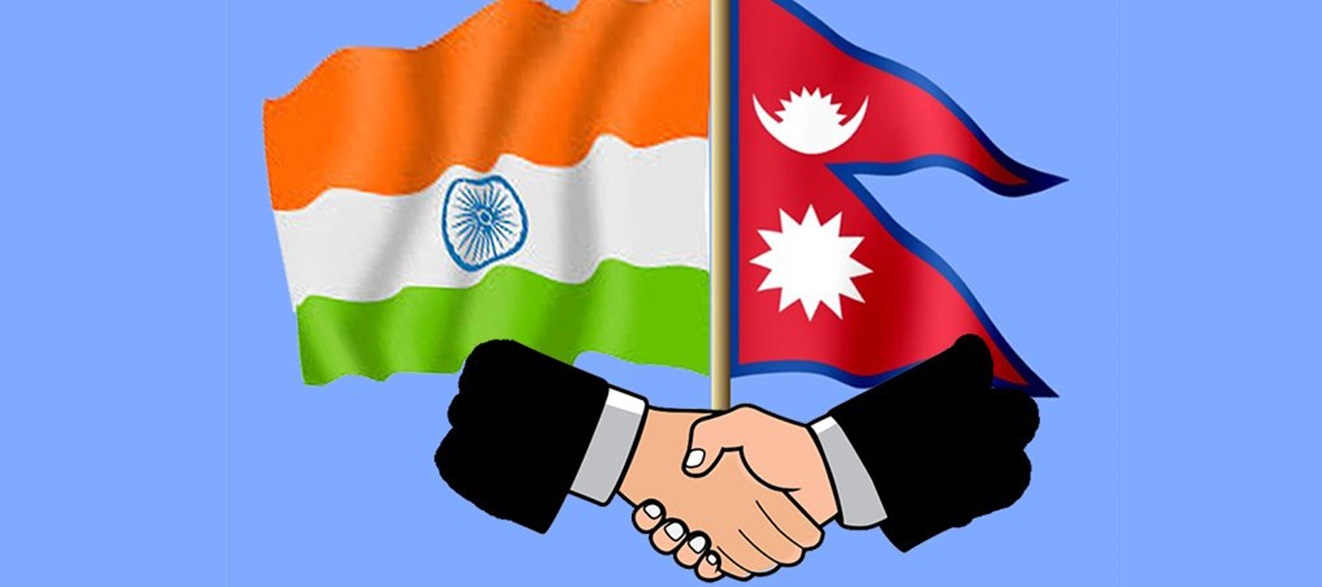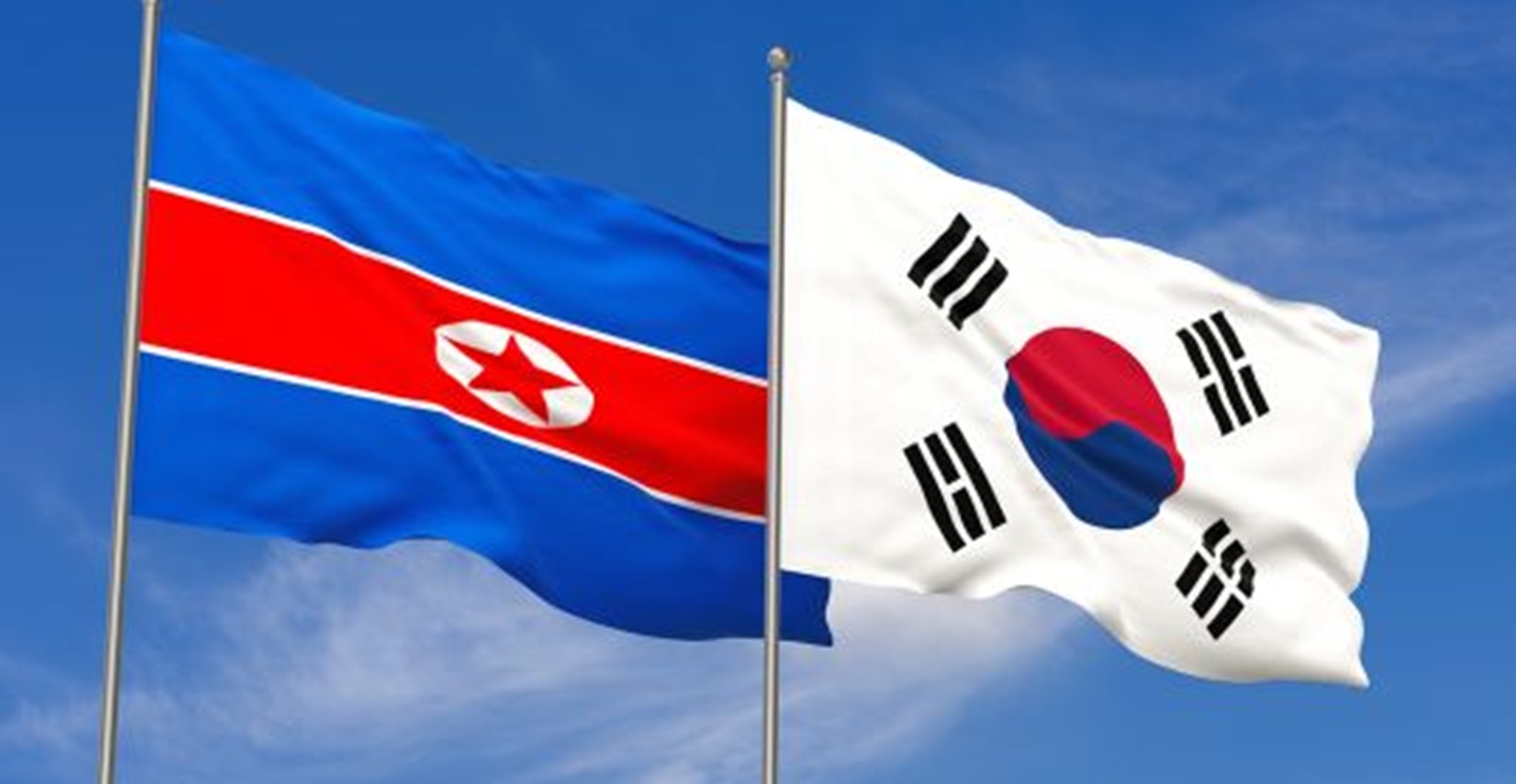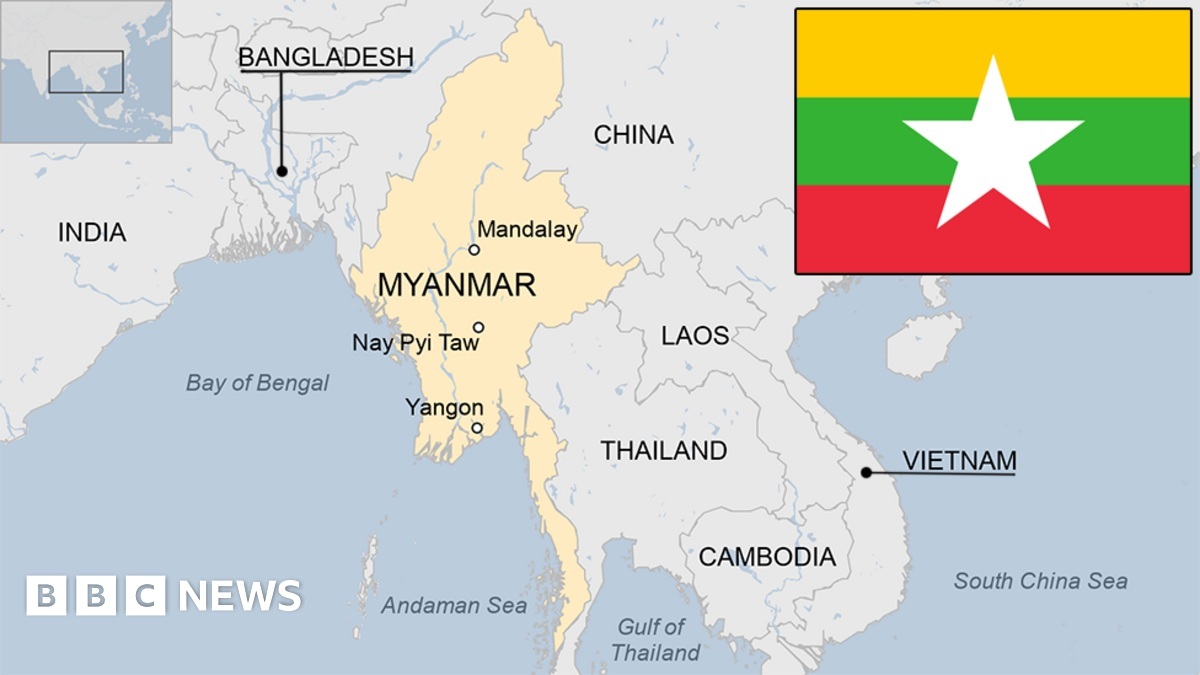India and Nepal shares a common border of over 1850 km across Sikkim, West Bengal, Bihar, Uttar Pradesh and Uttarakhand. As close neighbours, India and Nepal share a unique relationship of friendship and cooperation characterized by open borders and deep-rooted people to people relationship.
A Symbiotic Relationship
Nestled amidst the majestic Himalayas, India and Nepal share a unique bond that transcends mere geographical proximity. Their relationship, intricately woven through centuries of cultural exchange, economic interdependence, and strategic necessity, presents a compelling case of two nations that need each other for stability and prosperity. This article explores the multifaceted nature of this symbiotic relationship, highlighting the areas of cooperation and the challenges that need to be addressed for a stronger future.
India and Nepal have a long-lasting heritage of shared history since recorded history. This is facilitated to a great deal by the geographical proximity of these nations. Nepal lies along the mountains of the central portion of the Himalayas. The “land slopes downwards from the almost impenetrable and mighty Himalayan wall of the north until it reaches the southern fertile Terai plains. The narrow track of Terai plains was once covered by thick tropical forest known as the Char Kose Jhadi or malarial curtain”. India lies to the south of the Terai. The river Mechi which flows in between the eastern boundary of Nepal and India formed the eastern border and the river Mahakali in Western Nepal became the western border of Nepal.
The Nepal Himalayas consist of four major massifs – “Nanda Devi (25,700 feet), Dhaulagiri (26,826 feet), Gosainthan (26,305) and Kanchanjunga (28,156 feet) – making the formidable northern wall throughout the length of the country. The 29,028 feet Mount Everest lies roughly midway and gives off no main ridges.”
“Nepal’s shape is roughly rectangular, about 650 kilometres long and about 200 kilometres wide, comprising a total of 147,181 square kilometres of land. A landlocked country, it is surrounded by India on three sides and by China’s Xizang Autonomous Region (Tibet) to the north. It is separated from Bangladesh by an approximately 15 kilometre-wide strip of India’s state of West Bengal, and from Bhutan by the 88 kilometre-wide Sikkim, also an Indian state. Nepal is almost totally dependent on India for transit facilities and access to the sea, that is, the Bay of Bengal.”
“Geographical position and historical development are largely determining factors of Nepal’s foreign policy that regardless of the kaleidoscopic change of contemporary events”, “and no matter what form of government has been instituted or what political party may be in power, it has a natural tendency to return again and again to the same general and fundamental alignment”. This is applicable in the Indo-Nepalese context and has been evident in political relations since the establishment of the modern State of Nepal from its inception to the current period.
This unique location of Nepal is of immense strategic value to India as well as to China. India has traditionally looked at its northern frontiers with China as the Himalayan watershed. The Himalayan watershed forms formidable military barriers that can be crossed at selected places only and therefore lend itself for a strong defence line requiring significantly lesser resources to defend. Any Chinese military or ideological influx or influence south of this watershed would be inimical to Indian interests and since the mountains of Nepal open out to the great Indian plains, it becomes crucial to safeguard the military interests of India.
China, on the other hand, views its borders with Nepal, as the soft under belly of Tibet. It, therefore, finds it necessary to ensure that it retains adequate political, strategic and economic leverage in Nepal so that its security is not compromised.
Security and Vulnerabilities
The Siliguri corridor, the only rail and road link between the rest of India and its north-eastern states, also merits for serious consideration. Its security is, therefore, vital for India, and it can be jeopardised by a small military manoeuvre or by subverting the people living in this area. Subversion can be easily carried out by political or ideological or religious fundamentalist forces both in Nepal and in Bangladesh. Chinese military presence, south of the watershed will pose serious threats to this area.
Nepal’s southern borders with India do not have geographical barriers and are open, porous and in places difficult to monitor by the security personnel. Any anti-India activity in Nepalese border areas will find easy access to a poorly guarded and insecure Indian heartland. These activities could be ISI sponsored violence, smuggling, drug running, and other economic offences.
All Nepal’s rivers, Budhi Ganga, Karnali, Andhikhola, Kali Gandaki, Dudh Koshi, Kabeli etc, originating or flowing in Nepal merge into River Ganges. Unchecked flows, every year, cause floods leading to serious social and economic havoc in India. Any uncontrolled release of water in critical periods of the monsoons will be detrimental to India’s security requirements. A close and friendly relationship is therefore warranted as any inimical political setup may be unresponsive to India’s concerns and release of water at critical moments during the monsoon period will have very serious consequences, economically and socially for India.
Deep Rooted Ties: A Shared Heritage
The foundation of India-Nepal relations lies in their profound cultural and historical connections. Hinduism and Buddhism, two dominant religions in both countries, bind them through shared pilgrimage sites like Pashupatinath in Kathmandu and Bodh Gaya in India. Intermarriage, linguistic similarities (Hindi and Nepali share Sanskrit roots), and a vibrant exchange of art, literature, and music further strengthen this people-to-people connect. The open border policy, a legacy of the 1950 Indo-Nepal Treaty of Peace and Friendship, facilitates this cultural osmosis, allowing for free movement and fostering a sense of kinship.
High amidst the snow-capped peaks of the Himalayas, India and Nepal share a bond that transcends mere geographical proximity. Their relationship, woven over centuries, is a vibrant tapestry of shared heritage, cultural exchange, and religious ties. There are deep-rooted connections that bind these two nations, exploring the historical context, the rich tapestry of cultural exchange, and the enduring significance of their shared heritage.
A Historical Tapestry: Foundations of Shared Identity
The historical roots of the India-Nepal relationship run deep. Ancient trade routes connected the two regions, facilitating the exchange of goods and ideas. The Mauryan Empire (3rd century BCE) encompassed parts of Nepal, fostering cultural and administrative integration. Hinduism, originating in India, found fertile ground in Nepal, shaping its social fabric and religious practices. The arrival of Buddhism in the 6th century BCE further cemented the cultural connection, with Nepal becoming a vital centre of Buddhist pilgrimage. These historical interactions laid the foundation for a shared identity that continues to resonate today.
A Vibrant Cultural Exchange: Shared Traditions and Expressions
Religious Resonance: A Shared Spiritual Journey
Religion occupies a central place in the lives of both Indians and Nepalese. Hinduism and Buddhism, with their emphasis on karma, dharma, and spiritual liberation, form the bedrock of their shared spiritual journey. Lumbini in Nepal, the birthplace of Gautama Buddha, attracts pilgrims from India and around the world, symbolizing the spiritual connection. Pashupatinath, a revered Hindu temple complex in Kathmandu, and Varanasi, the holy city on the Ganges in India, both draw devotees seeking spiritual solace, highlighting the shared reverence for sacred sites. These religious ties create a powerful sense of belonging and reinforce the deep-rooted connection between the two nations.
The cultural exchange between India and Nepal is a living testament to their deep-rooted ties. Hinduism, practiced by a majority in both countries, fosters a sense of kinship. The veneration of deities like Shiva and Vishnu, the observance of festivals like Dashain and Diwali, and the presence of countless temples and pilgrimage sites on both sides of the border create a shared cultural landscape. Languages like Nepali and Hindi share Sanskrit roots, facilitating communication and artistic expression. Nepali literature draws inspiration from Indian epics like the Ramayana and Mahabharata, while Indian music and dance forms have deeply influenced Nepali artistic traditions. This constant cultural exchange strengthens the bond between the two nations.
Beyond Borders: The Enduring Significance
The significance of India and Nepal’s shared heritage extends beyond borders. It fosters a sense of camaraderie and understanding, promoting regional stability and cooperation. The open border policy, a legacy of the 1950 Indo-Nepal Treaty of Peace and Friendship, allows for the free movement of people, further strengthening the cultural exchange. This shared heritage also serves as a bridge for collaboration in various fields, from education and healthcare to tourism and infrastructure development.
Economic Interdependence: A Mutually Beneficial Exchange
Nestled amidst the majestic Himalayas, India and Nepal share an intricate economic relationship. This interdependence transcends mere geographical proximity, fostering a symbiotic exchange that benefits both nations.
India is Nepal’s largest trading partner, accounting for a significant portion of its imports and exports. Nepal relies heavily on India for essential goods, fuel, and access to the sea through Indian ports. Conversely, India benefits from Nepal’s hydropower potential, with several joint projects harnessing the power of Himalayan rivers. Additionally, Nepal serves as a crucial transit point for Indian trade with Bhutan and beyond. The remittance sent home by Nepalese working in India is another vital economic pillar for Nepal.
Trade and Transit: A Lifeline for Nepal
India is Nepal’s economic lifeline, accounting for over two-thirds of its total trade. Nepal relies heavily on imports from India for essential goods like fuel, food grains, pharmaceuticals, and construction materials. The open border policy, established by the 1950 Indo-Nepal Treaty of Peace and Friendship, allows for the free movement of goods and people, facilitating seamless trade. Additionally, landlocked Nepal utilizes Indian ports like Kolkata and Visakhapatnam for access to the global market, making India crucial for its export competitiveness.
Remittances: A Pillar of Nepal’s Economy
A significant portion of Nepal’s economic well-being is tied to remittances sent back home by Nepalese workers in India. Millions of Nepalese, primarily skilled and semi-skilled workers, find employment across various sectors in India, particularly in construction, hospitality, and security services. These remittances contribute significantly to Nepal’s foreign exchange reserves, provide financial stability to families, and fuel domestic consumption.
Hydropower: A Source of Clean Energy for India
Nepal, blessed with abundant rivers cascading down the Himalayas, possesses immense hydropower potential. India, facing a growing energy demand, has become a major partner in harnessing this resource. Several joint hydropower projects are already operational, providing clean energy for India while generating crucial revenue for Nepal. The potential for further collaboration in this sector exists, offering a win-win situation for both nations.
Challenges and Opportunities: Fostering a Balanced Partnership
Despite the evident benefits, the Indo-Nepal economic partnership faces some challenges. Trade imbalances are a major concern for Nepal, as imports from India far exceed exports. Non-tariff barriers and complex Indian customs procedures can further hinder Nepal’s export competitiveness. Additionally, occasional disruptions at border crossings due to political issues can disrupt the smooth flow of trade.
Building a More Equitable Partnership
To address these challenges and unlock the full potential of the economic relationship, several key steps can be taken:
• Facilitating Trade: Simplifying customs procedures on both sides and streamlining border crossing processes can expedite trade movement.
• Promoting Nepali Exports: India can assist Nepal in developing export-oriented industries and identifying niche markets for its products.
• Investment in Infrastructure: Investment in cross-border infrastructure projects like roads, bridges, and transmission lines can enhance connectivity and reduce transportation costs.
• Regional Integration: Increased cooperation with regional bodies like SAARC can create a larger market for Nepali goods and attract foreign investment.
Conclusion: A Shared Economic Future
The economic interdependence between India and Nepal is a cornerstone of their bilateral relationship. By addressing existing challenges, fostering trade diversification, and investing in infrastructure development, both nations can ensure a more mutually beneficial exchange. A robust economic partnership not only fosters prosperity but also paves the way for greater regional integration and cooperation. As the Himalayan peaks stand witness, India and Nepal must work together to ensure their economic destinies remain intertwined, leading to a brighter future for both nations.
Disclaimer: The views and opinions expressed by the author do not necessarily reflect the views of the Government of India and Defence Research and Studies
Title image courtesy: The Rising Nepal
Article Courtesy: Chanakya Forum







